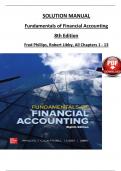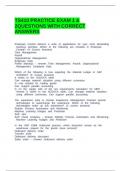Exam (elaborations)
Solution Manual For Fundamentals of Financial Accounting, 8th Edition 2024 by Fred Phillips, Robert Libby, Verified Chapters 1 - 13, Complete Newest Version
- Module
- Institution
Solution Manual For Fundamentals of Financial Accounting, 8th Edition 2024 by Fred Phillips, Robert Libby, Verified Chapters 1 - 13, Complete Newest Version Solution Manual For Fundamentals of Financial Accounting, 8th Edition by Fred Phillips, Robert Libby, Verified Chapters 1 - 13, Complete Newes...
[Show more]




